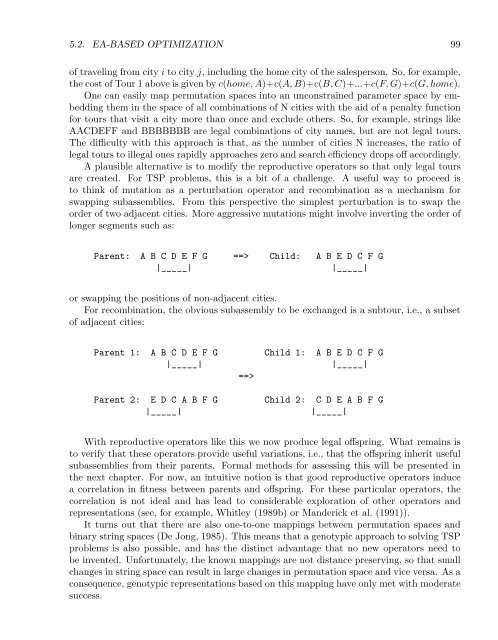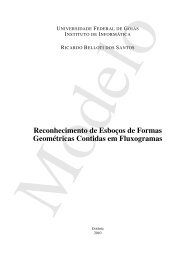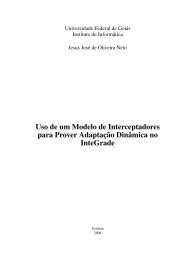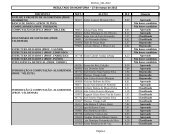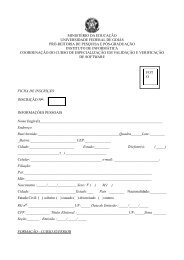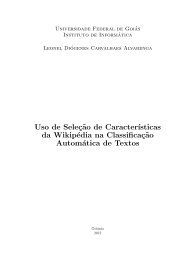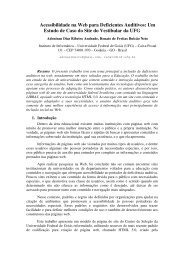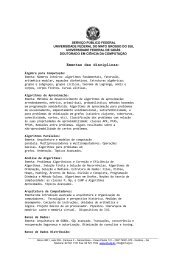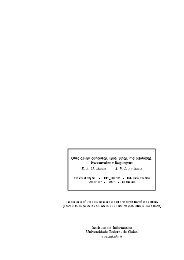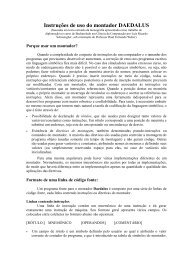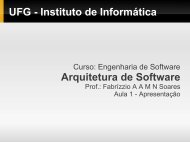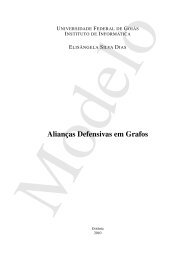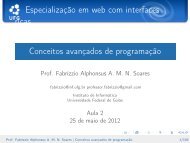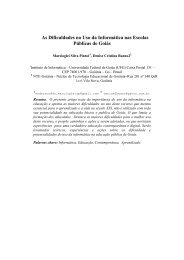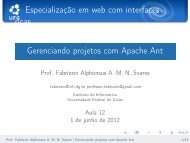Evolutionary Computation : A Unified Approach
Evolutionary Computation : A Unified Approach
Evolutionary Computation : A Unified Approach
You also want an ePaper? Increase the reach of your titles
YUMPU automatically turns print PDFs into web optimized ePapers that Google loves.
5.2. EA-BASED OPTIMIZATION 99<br />
of traveling from city i to city j, including the home city of the salesperson. So, for example,<br />
the cost of Tour 1 above is given by c(home, A)+c(A, B)+c(B,C)+...+c(F, G)+c(G, home).<br />
One can easily map permutation spaces into an unconstrained parameter space by embedding<br />
them in the space of all combinations of N cities with the aid of a penalty function<br />
for tours that visit a city more than once and exclude others. So, for example, strings like<br />
AACDEFF and BBBBBBB are legal combinations of city names, but are not legal tours.<br />
The difficulty with this approach is that, as the number of cities N increases, the ratio of<br />
legal tours to illegal ones rapidly approaches zero and search efficiency drops off accordingly.<br />
A plausible alternative is to modify the reproductive operators so that only legal tours<br />
are created. For TSP problems, this is a bit of a challenge. A useful way to proceed is<br />
to think of mutation as a perturbation operator and recombination as a mechanism for<br />
swapping subassemblies. From this perspective the simplest perturbation is to swap the<br />
order of two adjacent cities. More aggressive mutations might involve inverting the order of<br />
longer segments such as:<br />
Parent: A B C D E F G ==> Child: A B E D C F G<br />
|_____|<br />
|_____|<br />
or swapping the positions of non-adjacent cities.<br />
For recombination, the obvious subassembly to be exchanged is a subtour, i.e., a subset<br />
of adjacent cities:<br />
Parent 1: A B C D E F G Child 1: A B E D C F G<br />
|_____|<br />
|_____|<br />
==><br />
Parent 2: E D C A B F G Child 2: C D E A B F G<br />
|_____|<br />
|_____|<br />
With reproductive operators like this we now produce legal offspring. What remains is<br />
to verify that these operators provide useful variations, i.e., that the offspring inherit useful<br />
subassemblies from their parents. Formal methods for assessing this will be presented in<br />
the next chapter. For now, an intuitive notion is that good reproductive operators induce<br />
a correlation in fitness between parents and offspring. For these particular operators, the<br />
correlation is not ideal and has lead to considerable exploration of other operators and<br />
representations (see, for example, Whitley (1989b) or Manderick et al. (1991)).<br />
It turns out that there are also one-to-one mappings between permutation spaces and<br />
binary string spaces (De Jong, 1985). This means that a genotypic approach to solving TSP<br />
problems is also possible, and has the distinct advantage that no new operators need to<br />
be invented. Unfortunately, the known mappings are not distance preserving, so that small<br />
changes in string space can result in large changes in permutation space and vice versa. As a<br />
consequence, genotypic representations based on this mapping have only met with moderate<br />
success.


